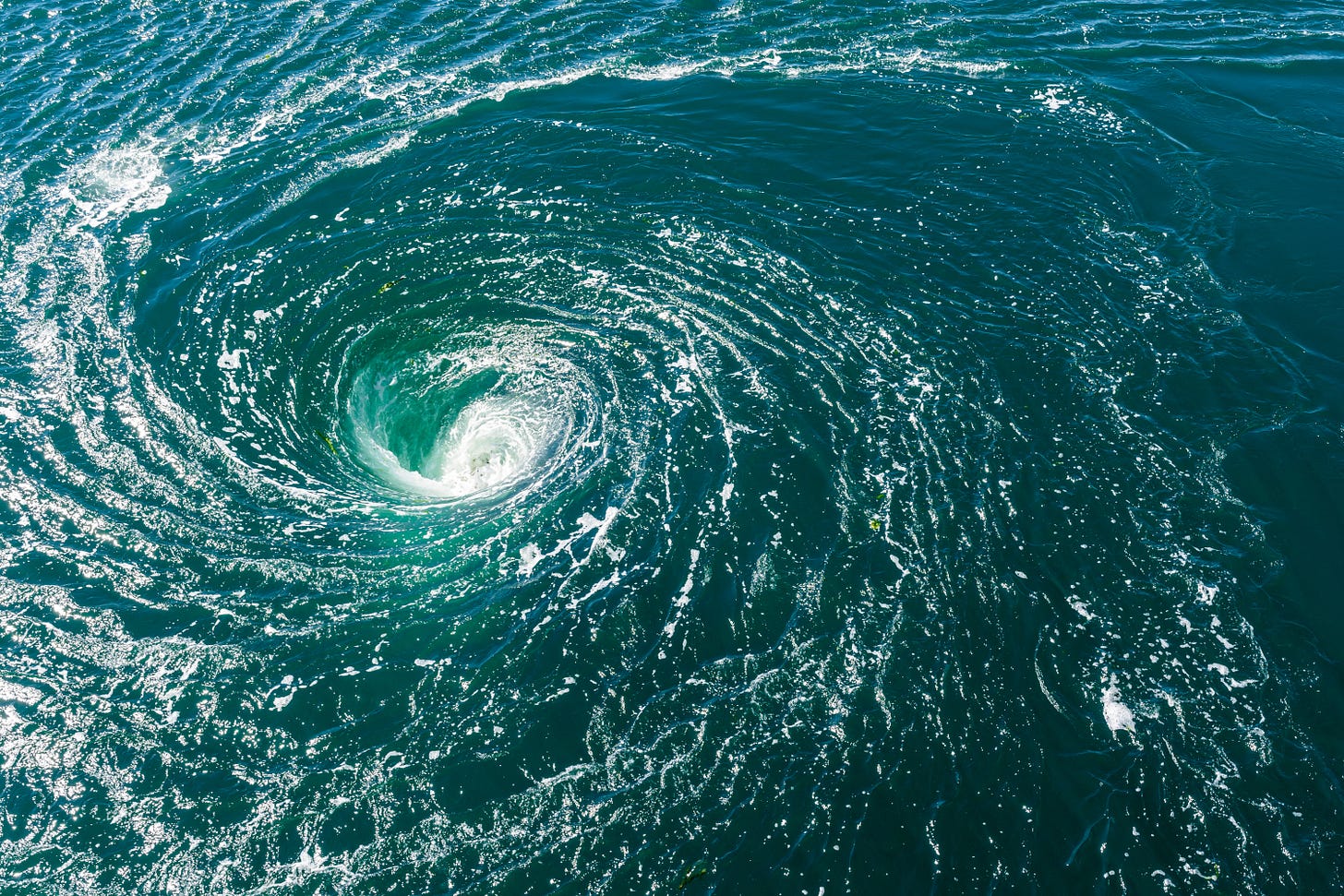Antarctic Ocean Currents Threaten "The Day After Tomorrow"
For review: Ahead of our AMOC article this weekend, it's good to review this one, about its partner.
This article may be shared on social media and used in the classroom.
They are, truly, the stuff of myth and legend. Odysseus, on his journey home, encountered the monster Charybdis, whose great thirst for the sea thrice a day created a great maelstrom that consumed men and ships. Now we place this maelstrom near Messina and Scilla in the narrow strait between Italy and Sicily. It is this whirlpool in this place that proved so threatening to seafarers that it appeared not only in The Odyssey but also in the myths of Jason and the Argonauts and in the stories of the Trojan Aeneas.
But it was not these Mediterranean sea spinners that captivated earth scientists in 1970. It was the spinning of the North Atlantic maelstroms—seven huge whirlpools in the Greenland and Norwegian Seas called chimneys—that would lead to a stunning revelation filled with wonders and fears. The chimneys, scientists learned, were a part of an ocean turbine system—the northern part. The southern part is the current that circles the globe while while it circles Antarctica.
Together these currents run a global “conveyor belt” of ocean water that both cools and warms the planet—releasing excess heat near the Arctic Circle while simultaneously warding off the next ice age by keeping the world warm enough that it doesn’t freeze.
Worldwide, north and south, the circulation of the seas is slowing down. That’s trouble.
First let’s look at the whole world. Read more.


